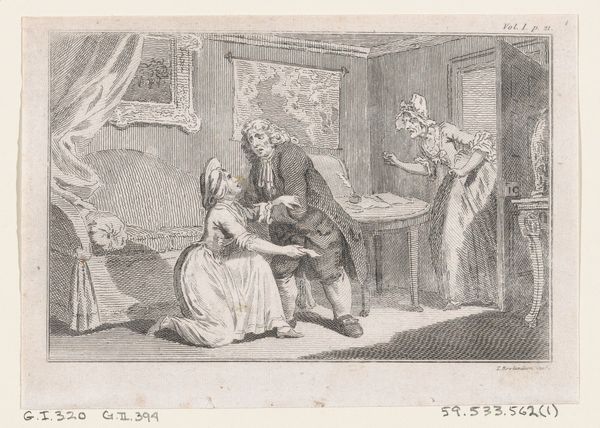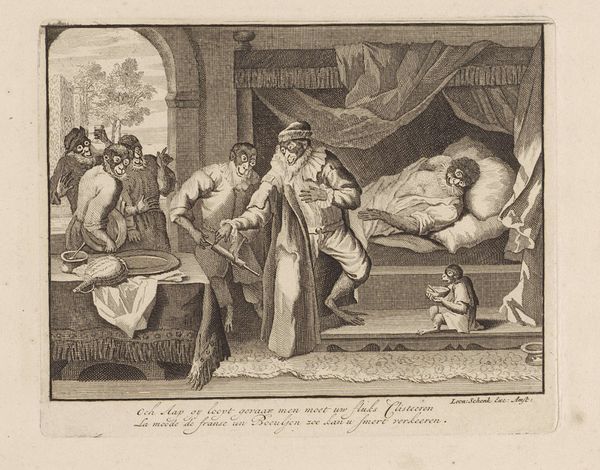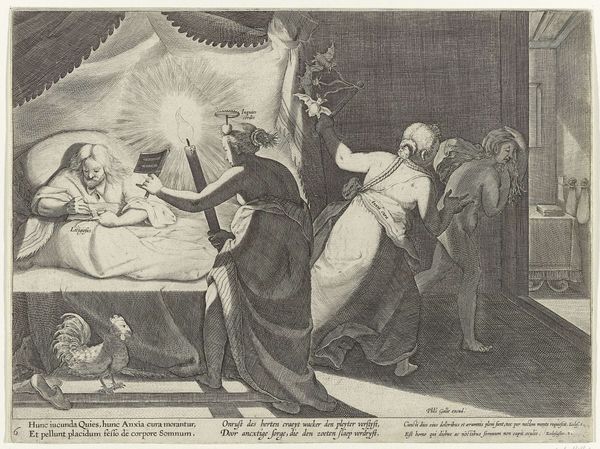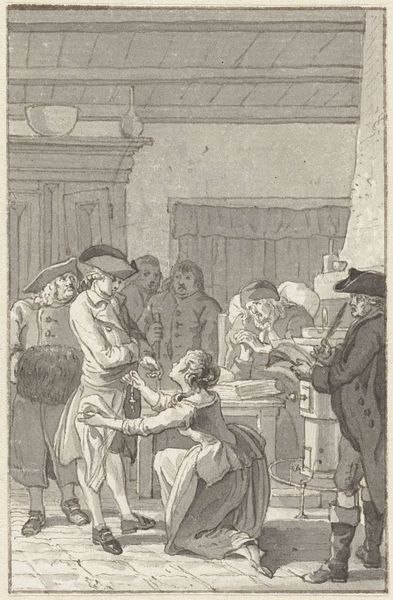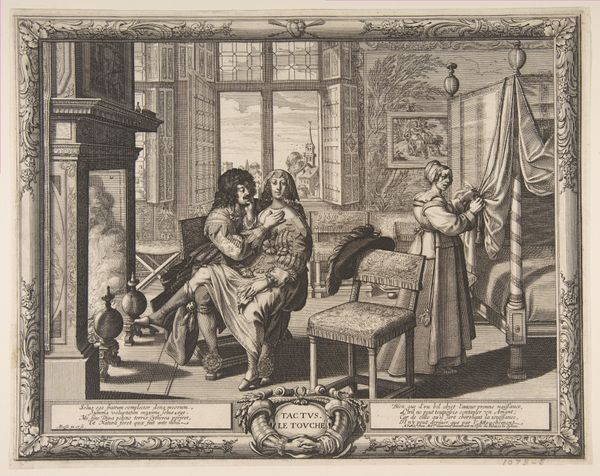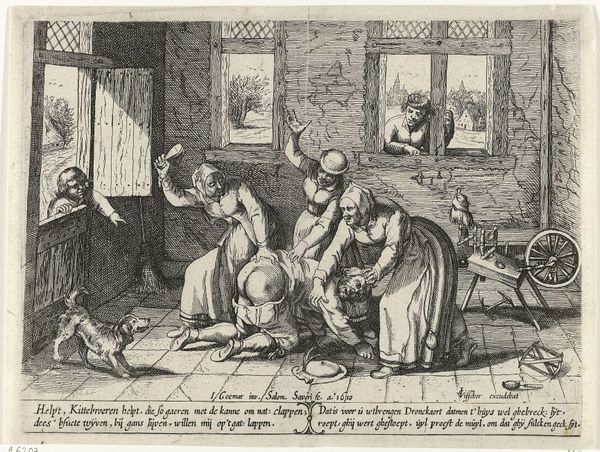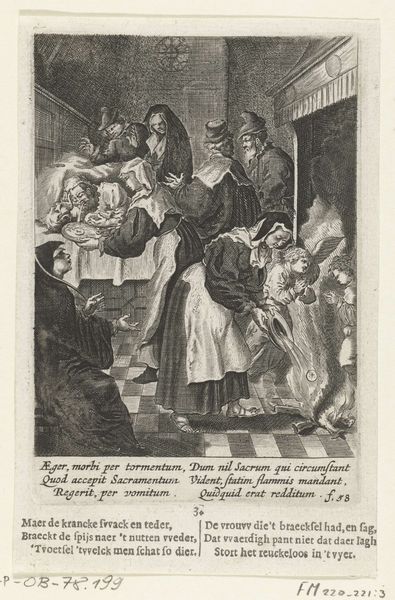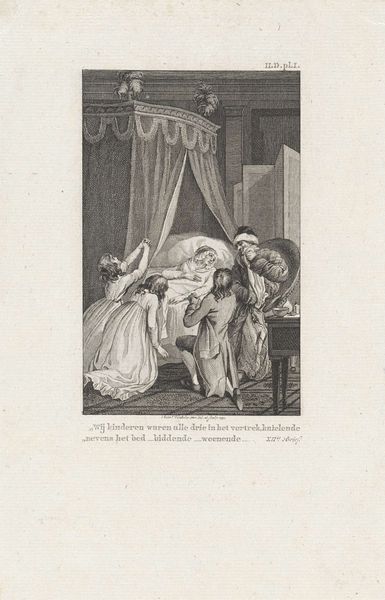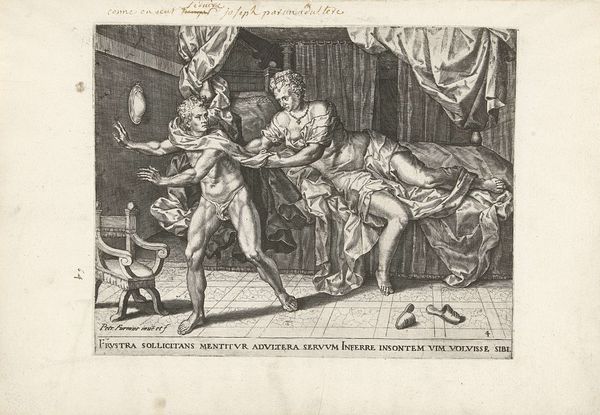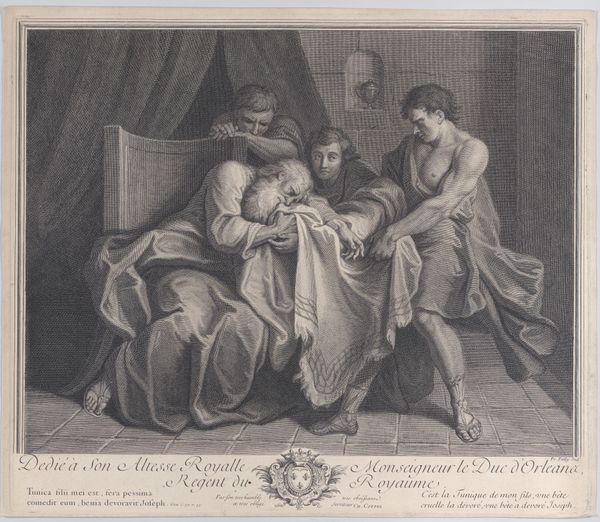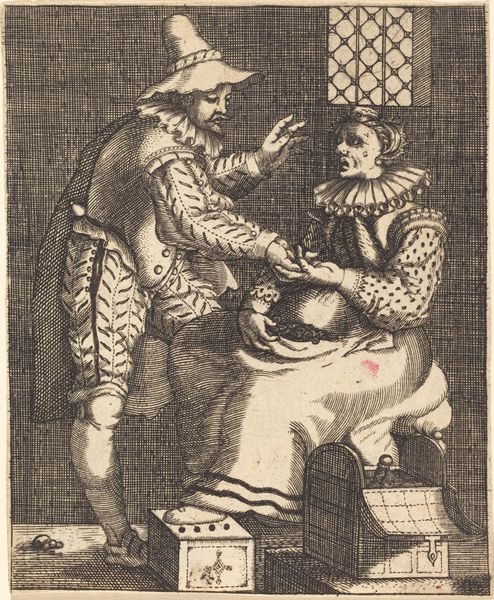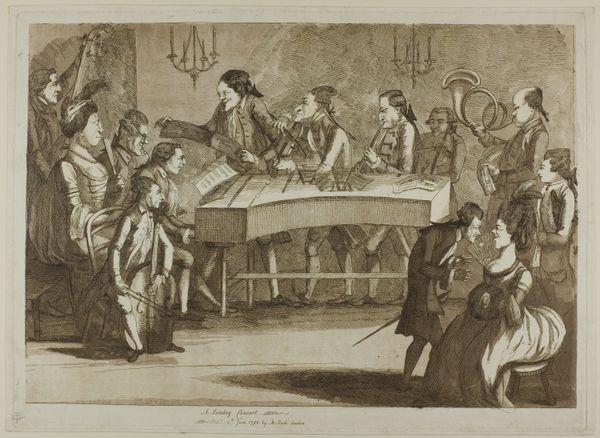
print, engraving
#
narrative-art
#
baroque
# print
#
old engraving style
#
figuration
#
genre-painting
#
engraving
Dimensions: height 195 mm, width 226 mm
Copyright: Rijks Museum: Open Domain
Editor: So, this engraving, "Vrouw die haar netten droogt" by Pieter de Jode I, dates back to before 1610 and is on display at the Rijksmuseum. My first impression is that the interaction between the two figures feels staged, maybe even performative. What do you see in this piece, especially considering its time? Curator: This engraving provides a fascinating glimpse into the power dynamics of the Baroque era, especially considering gender roles. The woman is leaning in a posture which might imply seduction or subordination while also airing fishing nets. What are the social expectations being presented by such an image? Is she trying to adhere to those roles or is she subverting them in any way? Editor: Subverting them how? She seems fairly helpless, leaning heavily, yet simultaneously present. Curator: Exactly! Her gaze is not on the man, but rather, is directed toward us, inviting the viewer to question her situation, she directly questions this image’s inherent male gaze. De Jode may have deliberately created tension. Can we even suggest that the net is related to a potential sense of her feeling trapped, an understanding further enforced through the suggestive text at the bottom of the image? How do contemporary feminist perspectives help us interpret her positioning and potential agency? Editor: That reframes my whole understanding of this print! Thinking about it now, she could even be a collaborator in constructing that tension through the implied social performance. Curator: Precisely. Art history and theory offer a lens through which we are able to not only observe the visual language, but also to consider broader themes such as power, identity and agency within historical contexts. This helps the audience of today to recognize the complexity of narratives embedded within this one work. Editor: I'm definitely leaving with a new way of seeing art and gender, thinking about subversion rather than simple depictions. Thank you!
Comments
No comments
Be the first to comment and join the conversation on the ultimate creative platform.
